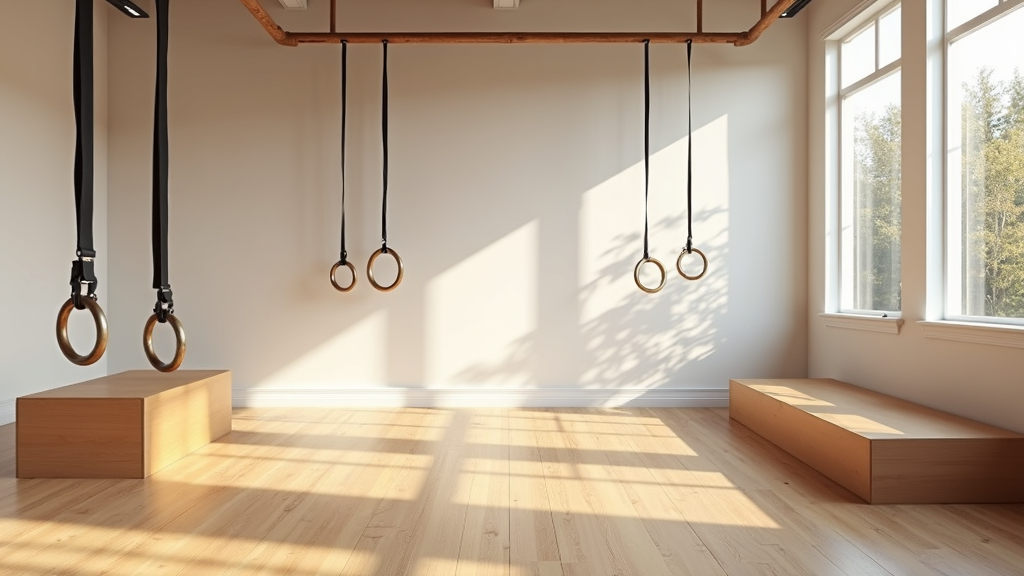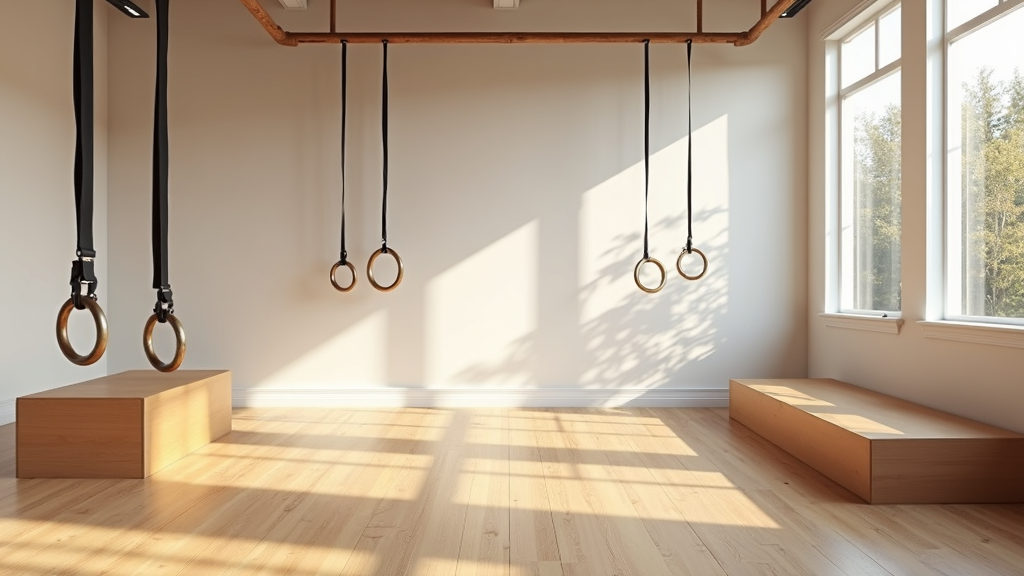Bodyweight training isn’t just old school. It’s how the world’s most explosive and agile athletes get their edge. Think about the crazy athleticism of martial artists, gymnasts, or pro football players. What they have in common is the ability to move their bodies with power, control, and speed—no fancy equipment required. It’s about dialing into natural movement, getting strong through full ranges of motion, and building real-world skills you can use anywhere, anytime.

Why Bodyweight Workouts Matter for Athleticism
Bodyweight exercises build functional strength you can use in real-life situations. You’re never just moving one muscle at a time. Every rep fires up stabilizers, gets the core involved, and tests your coordination. Unlike machines, which lock you into rigid patterns, bodyweight moves teach you to control your body in space, react to changing environments, and transfer force efficiently.
If you check out the training routines of combat athletes, military units, or any field sport pros, you’ll notice bodyweight training is non-negotiable. These sessions bring together mobility, stability, speed, and endurance—an allinone package for athletes who want to take their game up a notch. Even better, you don’t need a gym. You can get a wicked workout anywhere: in a park, at home, or wherever you are.
The Athletic Warm-Up: Get Mobile, Get Primed
Warming up isn’t about jogging in place for a minute and calling it good. If you want to move and perform like an athlete, a proper dynamic warmup is a must. Here’s what makes an athletic warmup different:
- Dynamic Mobility: Loosen the joints and activate the right muscles. Try leg swings, shoulder circles, and hip openers, keeping things snappy and controlled.
- Muscle Activation: Wake up the glutes, shoulders, and core so they’re ready to fire. Glute bridges, scapular pushups, and even mini band walks can make a big difference.
- CNS Primer: Fire up the nervous system for fast, powerful movements. A round of pogo jumps, skipping, or some short sprints works surprisingly well.
Getting warm this way means you’ll be more explosive and mobile and less likely to tweak something once the workout ramps up.
Upper Body Moves That Build Power and Control
Upper body bodyweight training is about more than cranking out pushups. It’s about training multiple push and pull patterns, balancing strength with stability, and working through angles that translate into any sport. Here are the moves every athlete should dial in:
- Pushups: Mix it up with standard, explosive, archer, or even feetelevated for extra challenge. Pseudoplanche pushups are seriously tough if you want to challenge yourself.
- Dips: Rings, parallel bars, or even a sturdy bench fire up chest, triceps, and shoulders. Slow the negative for more intensity.
- Pullups and Chinups: Few moves test real upperbody power like these. Adjust your grip, go slow on the way down, or pause at the top for extra burn.
- Inverted Rows: Great for pulling strength and shoulder balance. All you need is a low bar, sturdy table, or a pair of rings.
- Handstand Holds and Wall Walks: Build shoulder stability, core control, and total body tension. Start with wall support; work toward freestanding as control builds.
Mix several of these into your routine and you’ll build better pressing, pulling, and arm drive—keys for athletic speed and upper body power.
Lower Body Strength and Speed, No Weights Needed
Great athletes need strong, fast, and stable legs. While heavy squats are cool, you can absolutely train explosive leg power and singleleg strength with just your body weight. These moves are crucial for field or court sports:
- Bulgarian Split Squats: Prop your back foot on a step or bench. Go slow, get that back knee close to the ground, and try adding a jump at the top for an athletic boost.
- Skater Lunges and Lateral Bounds: Boost lateral stability and test your ability to explode to the side, just like you would cutting on the field.
- Jump Squats: Train power by driving up hard and landing softly. Reset every jump and keep an eye on form, not just speed.
- SingleLeg Glute Bridges: Strengthen the backside, balance out the hips, and fire up glutes and hamstrings—super useful for runners and jumpers.
- Sprint Intervals: Short, allout sprints build real acceleration and give you practice in producing force against the ground.
Switch up the tempo, the range of motion, and direction for a complete lower body session. Don’t be afraid to experiment with explosive and slow variations.
Build Explosiveness with Plyometrics
Plyometric exercises use nothing but your own weight and a little bit of guts to build explosive power and quick reactions. Here’s how to add them in, even if you have zero equipment:
- Broad Jumps: Launch forward as far as you can, then reset for max distance each time.
- Depth Drops to Jumps: Step off a low box, land softly, and immediately explode upward. These combos are great for athletes who need fast changeofdirection skills.
- Tuck Jumps: Jump and tuck knees to chest, land soft—fires up lower body explosiveness and helps with landing control.
- Lateral Hurdle Hops: Set up a low object or draw a line and hop side to side quickly.
- Bounding: Overstride in control, focusing on a strong push off with every stride and staying balanced.
Keep the sets short and the focus on quality. Rest enough to give every jump full effort. The goal is explosiveness, not getting tired.
Core and Midline Stability for All Athletes
Top athletes train their core differently than people chasing sixpack abs. It’s about stabilizing force, transferring power between upper and lower body, and resisting movement. My favorite picks:
- Hanging Leg Raises: Hang from a bar and bring toes up high—this fires the deep core and builds grip strength.
- VUps: Snap up in a controlled motion, keeping glutes and lower back glued to the mat.
- Plank Variations: Walk the plank with arms or feet, go sidetoside, or hold at the toughest spots. The RKC plank (full body tension) is a real test.
- Hollow Body Holds: Press the lower back to the mat, arms overhead, legs straight and low. It looks chill—until you try holding it!
- AntiRotation Drills: Moves like shoulder taps, or if you have a resistance band, Pallof presses—these fight twisting forces and build stability.
With a strong core that’s ready for action, you’ll be braced and solid. This matters for contact sports and heavy lifts down the line.
Sample Athletic Bodyweight Circuit (No Gear Needed)
If you want a workout that covers everything—and you need it to be portable, challenging, and athletic—give this circuit a go. Repeat three to five rounds, keep the intensity high, and always focus on sharp form:
- 10 Jump Squats
- 10 Pushups
- 10 Walking Lunges (each leg)
- 5 Pullups or Inverted Rows
- 30 seconds Hollow Body Hold
- 100m Sprint or Shuttle Run
Rest for 60 to 90 seconds between rounds. If you’re just starting, take longer rests and drop a round; if you’re advanced, cut those breaks and hit the gas. Focus on moving with power and good technique every set.
Making It Work: Scaling Up or Down
The cool thing about bodyweight training is how easy it is to fine-tune for any level. To make things tougher, you can try:
- Slowing down the lowering phase (eccentric tempo)
- Adding pauses at sticking points
- Explosive variants (clap pushups, jumping lunges, etc.)
- Cutting rest to train fatigue resistance
If you’re new or recovering from an injury, you can:
- Do pushups on a wall or incline
- Assist dips or rows with your feet
- Use partial range until you build strength and mobility
Remember, it’s progress that matters. Consistency beats perfection every day.
No-Gym Athleticism: Built Anywhere
Travel a lot? Stuck at home? Training for a deployment? Bodyweight routines are the go-to way to keep up your strength, speed, and flexibility when equipment is limited. Tons of coaches rely on these for offseason work or as a foundation for bigger lifts and power moves down the road.
Mix in some nutritious, protein heavy meals, stay hydrated, and don’t sleep on rest. Add in smart recovery—maybe a little massage or stretching, and you’ll bounce back fast and see steady gains without ever stepping into a traditional gym.
Bodyweight training also connects you with your own athleticism and body awareness. No matter your sport, these patterns give a base you can rely on when you decide to ramp up intensity or add more resistance.
Key Takeaways for Building Athleticism With Your Body
Mastering your body will teach you control, confidence, and realworld strength that goes beyond the mirror. It’s perfect for athletes, weekend warriors, or anyone who wants to feel, move, and perform better in daily life. The habits you set now will carry over into every sport or training phase you decide to try next.
Want more tactical programming? Stay tuned—the next series will break down advanced bodyweight routines designed for serious athletes ready to take things up a notch.

One Response
Hi, this is a comment.
To get started with moderating, editing, and deleting comments, please visit the Comments screen in the dashboard.
Commenter avatars come from Gravatar.